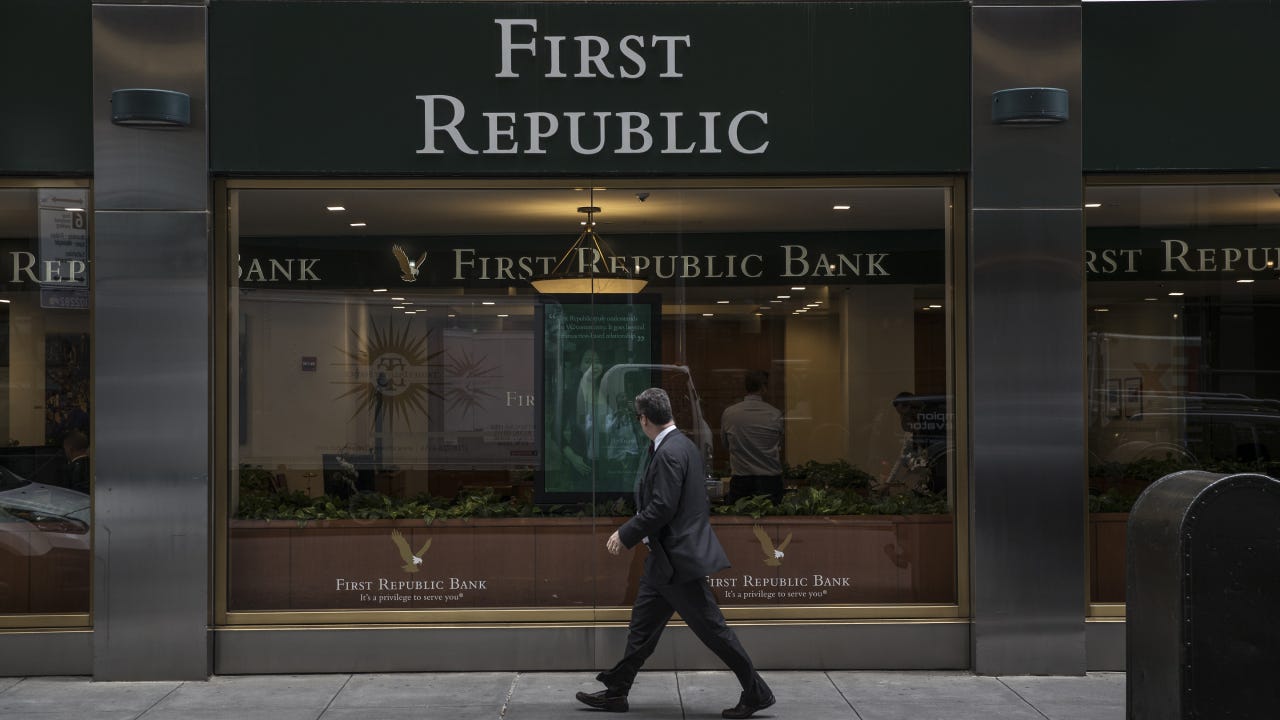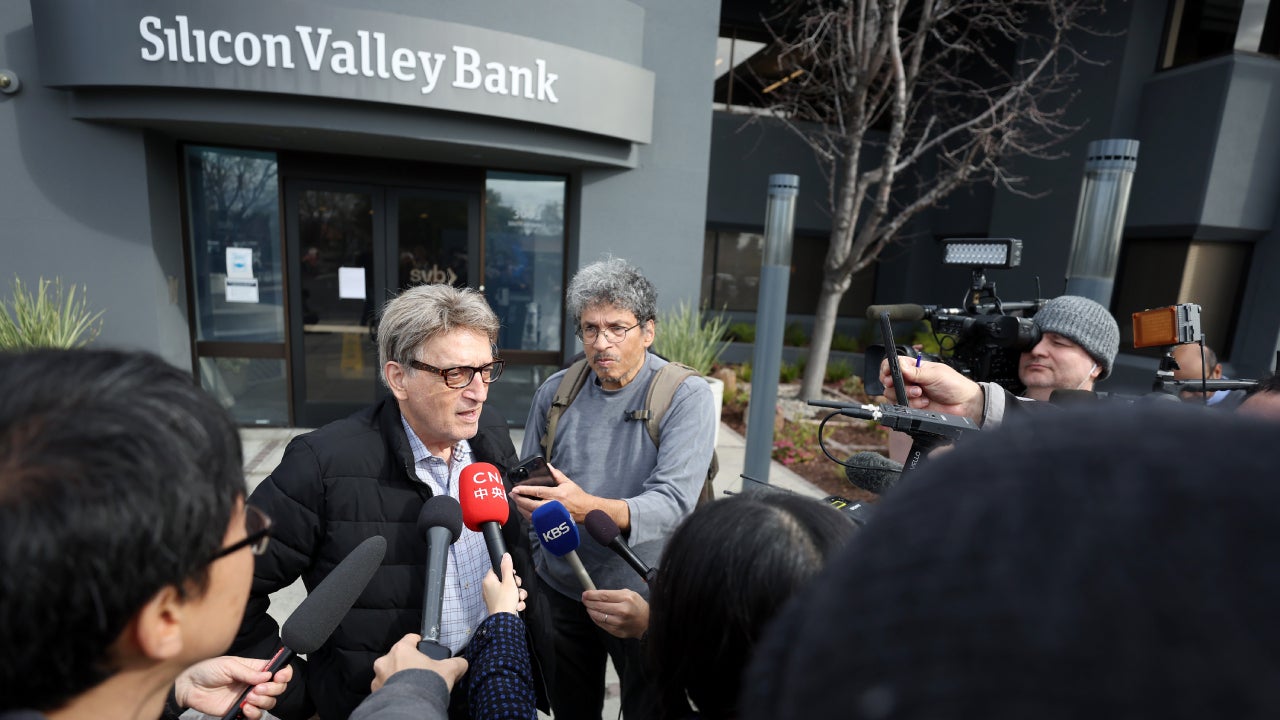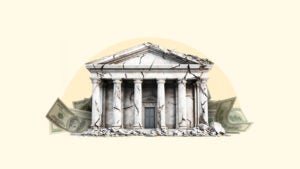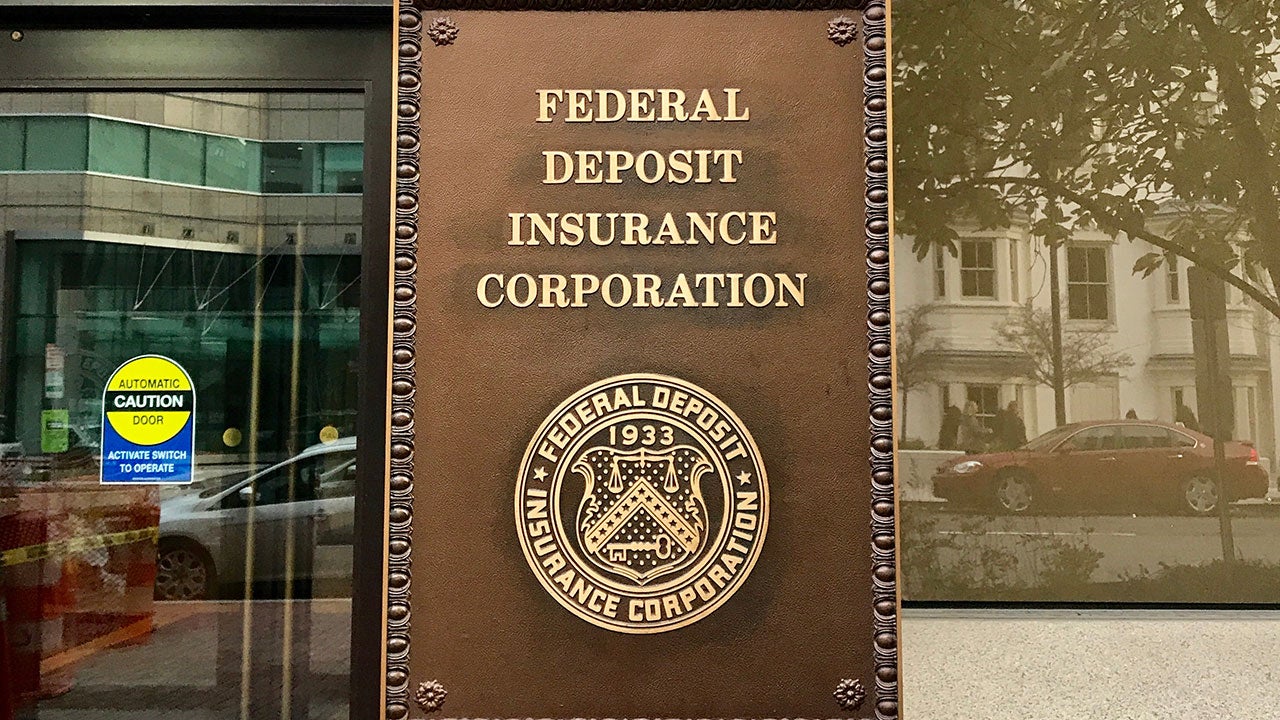First Republic Bank collapse: What you need to know

Regulators seized the beleaguered First Republic Bank on Monday, May 1, and sold most of the bank’s operations to JPMorgan Chase. First Republic is the third bank to be shuttered by regulators since March, when the high-profile failures of Silicon Valley Bank (SVB) and Signature Bank shook up the banking system.
All of the deposits and a substantial majority of the assets of First Republic were assumed by JPMorgan Chase. First Republic’s 84 offices in eight states were set to reopen on Monday as Chase branches. First Republic depositors will automatically become depositors of Chase and will have access to all of their funds.
JPMorgan will also acquire $173 billion of loans and $30 billion of securities from First Republic, it said in a slide presentation.
The resolution of the ailing bank involved “a highly competitive bidding process,” according to a statement released by the Federal Deposit Insurance Corp. (FDIC).
The FDIC and JPMorgan Chase are also entering into a loss-share transaction on single-family, residential and commercial loans that JPMorgan purchased of First Republic. As such, Chase and the government agency will share in the losses and any recoveries of the loans covered by this agreement.
The FDIC estimated the cost to the Deposit Insurance Fund will be around $13 billion.
First Republic’s recent history
First Republic, a regional bank, had been seeking to turn its business around while its stock shares started to plummet after it released a troublesome quarterly earnings report on April 24. The bank carried billions in unrealized losses, due in part to its large book of single-family mortgages that were issued when rates were significantly lower.
The bank’s earnings report revealed it had lost $100 billion in deposits in the first quarter of 2023. This was fueled in part by panic among clients of regional banks due to the failures of SVB and Signature Bank. First Republic’s quarter-over-quarter deposits had dropped by more than 40 percent to $104.5 billion. This latest figure factors in a $30 billion infusion from 11 big U.S. banks in March — including JPMorgan Chase, Citigroup, Bank of America and Wells Fargo — as an attempt to prop up the embattled bank.
Based in San Francisco, First Republic catered to high-net-worth individuals, and a significant portion of its deposits were uninsured. It had planned to strengthen its business by increasing insured deposits and reducing its borrowings from the Federal Reserve Bank. The bank had also intended to reduce its workforce and cut executive pay.
How March bank failures affected First Republic
In March, the failure of Silicon Valley Bank and the subsequent collapse of Signature Bank incited a run on deposits at First Republic and various other regional banks. Around that time, Fitch Ratings and the S&P Global Ratings both downgraded the credit rating of First Republic due to it having a high proportion of uninsured deposits and its having lent out more money than it had in deposits.
First Republic, in need of capital, took out loans from the Federal Reserve and the Federal Home Loan Bank, as well as a line of credit from JPMorgan. Around this time, the bank also received the $30 billion infusion from the 11 big banks.
Meanwhile, many First Republic clients had moved their money to larger banks. Like Silicon Valley Bank and Signature Bank, the deposits of many of First Republic’s clients exceeded the Federal Deposit Insurance Corp. (FDIC) limit of $250,000 per depositor, per FDIC-insured bank, per ownership category.
What happens when a bank fails
A bank fails when it becomes insolvent, which means it doesn’t have enough funds to cover all of its customers’ deposits as well as what it owes its creditors. When the bank is insured by the FDIC, this agency takes over the bank and may choose to sell it to another bank or to dissolve it.
If the failed bank is sold to a healthy bank, insured depositors immediately become customers of the healthy bank and have access to their funds. If the failed bank is dissolved, the FDIC will begin issuing checks to depositors for the amount of their insured balances — which usually begins within a few days after the bank’s closing, according to the FDIC.
As a depositor, your money in an FDIC-insured bank is protected as long as it’s within FDIC limits and guidelines.
The FDIC deposit insurance limit is $250,000 per depositor, per FDIC bank, per ownership category. When the FDIC took receivership of SVB and Signature Bank, it made exceptions by covering all deposits, including those that exceeded its limits — which was an unprecedented move.
About First Republic
First Republic was founded in 1985, and it maintained offices in 11 states that included California, Florida, Massachusetts and New York. The bank and its subsidiaries offered personal and business banking, real estate lending, and private wealth management services.
In 2007, First Republic was acquired for $1.8 billion by Merrill Lynch, which subsequently was acquired by Bank of America. In 2010, Bank of America sold First Republic to a group of private investors. That same year, the bank became publicly traded once again.
Why we ask for feedback Your feedback helps us improve our content and services. It takes less than a minute to complete.
Your responses are anonymous and will only be used for improving our website.










